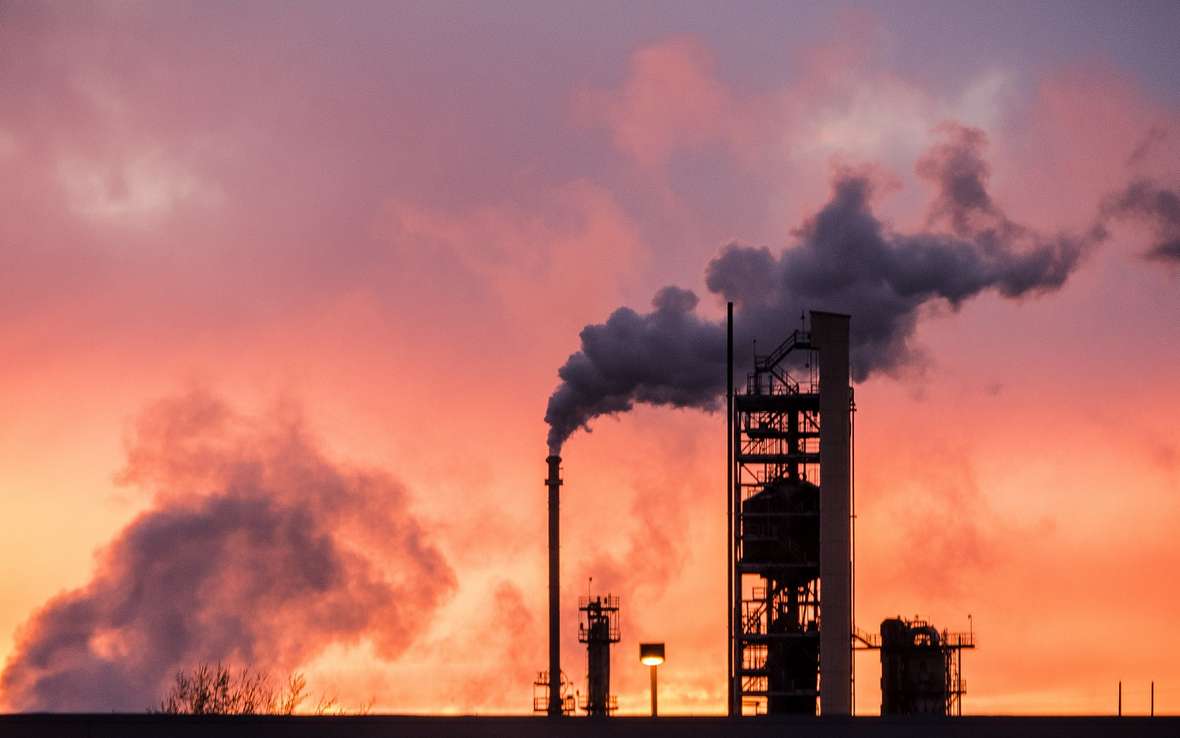- One of the top sources of greenhouse gases is transportation. Therefore, eliminating pollution from the countless motor vehicles driven across the planet is essential to achieving net-zero global emissions by 2050. This is a Paris Climate Change goal in the 2015 Paris climate agreement.
Climate change has been an overwhelming topic on discussion tables globally for decades. Everyone is a witness and affected by its devastating effects. The positive side of it is that we know exactly what we are supposed to do to win this fight against climate change.
Some organizations and countries are already making measurable and meaningful progress on this matter. Countries like China, India, the United States of America and Canada are cooperating and coordinating at higher levels to address the most pressing issues regarding climate change.
Just like the causes and effects of the climate crisis are clear, the solutions to these problems are clearer. Some of these solutions are;
1. No more relying on fossil fuels
Drastically reducing our consumption of fossil fuels is the most critical thing we can do to combat climate change. According to the United Nations, the use of petroleum products, natural gas and coal in our homes, industries, and transportation contributes a significant percentage to emitting gases that are warming the planet.
Read More
Apart from altering the climate, dirty energy brings about unacceptable ecological and human health issues.
Therefore, we must move swiftly in replacing coal, gas and oil with renewable energy sources. The trend for renewable energy is encouraging because clean energy is making gains every time due to technological improvement and production costs tend to decrease.
Nonetheless, according to the Intergovernmental Panel on Climate Change's Special Report on Global Warming of 1.5°C, we must hasten our efforts to reduce global carbon emissions by at least 45% below 2010 levels by 2030. this is the only solution we have. If we have to avoid the fatal effects of climate change, we must do it.
So far, we are doing well. Wind and solar are accounting for ever larger shares of electricity generation. Wind and solar generated only 10% of electricity globally in 2021. NRDC has projected that wind, hydro, solar and nuclear will account for nearly 80% of worldwide electricity by 2030.
Therefore, it is possible to realize our clean energy potential if we invest in repairing the ageing grid infrastructure and concentrating on installing new transmission lines. As this transformation occurs, automakers and governments should be preparing to replace vehicles using petrol and diesel with alternative vehicles that will produce zero emissions.
2. Ensuring greater energy efficiency
Energy efficiency should be the first fuel because the more energy-efficient our systems are, the less fuel we are likely to consume. This concept applies to all types of energy whether solar or gas power. The technology harnessing advancement over time has contributed more to energy needs globally than just oil, gas, coal and nuclear power.
Therefore, more energy efficiency strategies must be exercised across multiple sectors in the power plants, electrical grids, factories, homes, vehicles, home appliances, etc. Some of the climate-friendly strategies are tremendously complex.
For instance, aiding utility companies to adopt performance-based regulation systems is tricky because such companies no longer make extra money by selling more energy but rather improve their service provision.
Nevertheless, some strategies are straightforward, for instance, weatherproofing buildings, replacement of boilers and air conditioners with those that are super-efficient heat pumps super-efficient heat pumps, switching out light bulbs when not in use, installing cool roofs, replacement of incandescent light bulbs with LED switching out light bulbs, etc.
3. Sustainable transportation
One of the top sources of greenhouse gases is transportation. Therefore, eliminating pollution from the countless motor vehicles driven across the planet is essential to achieving net-zero global emissions by 2050. This is a Paris Climate Change goal in the 2015 Paris climate agreement.
It is projected that by 2035, electric vehicles will account for more than 50% of all sales compared to 2021, which accounted for less than 8% of the total vehicle sales globally. Most governments of the world are not only anticipating an all-electric future.
Still, they are working to ensure they succeed by setting goals and binding requirements to ensure the phase-out of gas-powered internal combustion engine vehicle sales.
By 2035, the anticipation is that there will be a turning point in adopting Electric Vehicles and the fight against climate change by all governments worldwide. Different automakers are also involved in this fight.
They have already announced their objective of phasing out gas-powered cars and light trucks. This shift will also benefit our grid, i.e. electric vehicles are an equivalent of a 'battery on wheels', and they can potentially supply electricity back to the network when demand arises, which in turn helps prevent blackouts.
It is critical to consider the different ways of getting around and building sustainability into each of them. Increasing access to public transportation and embracing congestion pricing will reduce car trips and subvert a lot of tons of carbon dioxide out of the planet annually.
Encouraging zero-emission forms of transportation through walks and biking can drastically reduce emissions further. Materializing these alternate forms of transportation requires more than mere talk. To realize this goal, a lot of funding, planning and building out of supportive infrastructure by leaders locally, nationally and internationally.
It is essential to have holistic and community-led solutions around things like land use policies and the movement of consumer goods to fully address the effects of the transportation sector.
Communities close to truck corridors, ports, warehouses and rail yards are more exposed to harmful emissions. This population is at a high risk of developing acute and chronic public health illnesses. Therefore, like other climate solutions, the transportation sector requires long-lasting change, which will lead to the transformation of historically marginalized communities.
4. Sustainable Buildings
The energy we use in our homes by keeping the lights and the appliances running for the sake of warming, cooling, cooking or heating water is the single largest source of carbon pollution in most countries worldwide. Therefore, a need to make our homes more energy efficient requires upgrading windows and adding insulation to attics likely decrease the numbers.
Therefore, It is essential to raise public awareness of cost- and carbon-saving changes that can be implemented in our homes and workplaces to make it easier for people to buy and install energy-efficient technology like heat pumps and certified appliances through effective energy programs.
Private businesses and organizations must also contribute to decarbonizing our homes and buildings. The homes should be more efficient and replace fossil fuel burning systems and appliances with clean powered ones. Policy tools are crucial in helping us get there.
County and national mandates should ensure the construction of newly constructed homes, offices and other buildings which are fitted with efficient electric systems for cooling, heating and hot water. Local governments and state governments should be mandated to meet the latest conservation standards when implementing their building licenses, achieving this will be effective in ensuring decarbonizing our buildings.
Already many places globally are implementing building performance standards that require existing buildings to reduce their energy use or carbon emissions with time. Importantly, these changes meet the target set. In that case, everyone must invest in the affordable housing sector to ensure efficient and decarbonized homes are open to renters and homeowners of all classes.
5. Better forestry management and sustainable agriculture
Trees, plants and soil are some of the strongest friends in the fight against climate change. Trees, soil, and plants store massive amounts of carbon dioxide underground. These carbon sinks have made life possible on this planet since time immemorial.
Without them, atmospheric temperatures would increase to unimaginable levels that would not allow any life on the Earth.
Whenever we cut down trees for timber and charcoal burning or rip out wetlands for development, we release climate-warming carbon into the air.
Likewise, the widespread overuse of nitrogen-based fertilizers in farms and generating industrial-scale livestock farming practices have, over time, released large amounts of nitrous oxide and methane, potent greenhouse gases, into the atmosphere.
Since we can't plant new trees fast enough to replace the ones we cut, we can combine responsible forestry policies, international pressure and change in consumer behaviour to end deforestation practices that have, over time, accelerated climate change, destroyed wildlife habitat and threatened the health and culture of Indigenous communities living in these spaces.
We must also realize that our managed landscapes are equally important as the wild ones and treat them carefully. This includes adopting organic and regenerative agriculture practices, reducing pesticide use, covering crops, using compost manure instead of synthetic fertilizers, practising rotational grazing, etc. All this will help nurture the soil, produce healthier food, and pay the climate dividend.
6. Preserving Nature
Research has shown that intact ecosystems suck up and store large amounts of carbon, 20 and 30%. Wetlands, mangroves and other coastal ecosystems accumulate and store carbon in their roots. Forests soak up about 75% of our annual fossil fuel emissions. Freshwater wetlands hold approximately 30% of all the carbon in the Earth's soil. Therefore, this indicates that addressing climate change without preserving nature will be impossible.
This explains why climate experts urge global leaders to fully protect and restore at least 40% of dry land, oceans and inland waters by 2030 while preserving biodiversity.
To reach this goal, we must limit industrial impacts on our public lands and water, endeavour to protect natural landscapes, support the creation of marine protected areas, practice bedrock environmental laws, and follow the examples set by past generations in stewarding the environment.
7. Industrial solutions
According to the Environmental Protection Agency (EPA), Industries, especially the heavy ones, are responsible for 40% of GHG emissions in the world. The emissions from these industries are a result of making a small set of carbon-intensive products, which comprise basic chemicals like steel, cement, iron, aluminium, glass and paper, among others.
Industrial plants are the significant sources affecting human health through air and water pollutants. So, if many industrial plants continue operating for the next few decades, the emission goals of 2050 will remain a nightmare.
Starting investments and plans as early as now is critical since we have been given the horizons for building and retrofitting industrial sites. Industries should reduce heavy industry climate emissions, reduce local pollution, and ensure they are scalable and widely available in the future, especially for developing nations to adopt cleaner processes and grow without further carbon emissions.
8. Technological Solutions
Although technology alone will not solve all our climate change problems, we need it to solve the climate crisis without research and innovations to develop things like longer-lasting Electric Vehicle batteries, non-polluting hydrogen-based solutions, as well as reliable and equitable methods of capturing and sequestering carbon.
We have to ensure we are not repeating past mistakes by ensuring we take action to reduce local harms from mining lithium, which is critical in the proposed electric vehicle batteries. To speed up research and development, funding is crucial. Therefore, governments must prioritize investing in clean energy technologies and spurring innovation through grants, tax incentives, subsidies and other possible rewards.
Every individual needs to take responsibility for solving the climate crisis. We should shift our focus to lobbying legislators and take climate actions in our daily lives seriously.
This can be achieved by switching off fossil fuels in our homes, being mindful of the climate footprint of the food we consume, checking our shopping habits, proper disposal of plastic materials, etc.
Acting collectively will bring about real change quickly. Some communities have set examples by fighting against fracking pipelines and oil drilling in people's backyards. Such local wins are a plus to climate change and protect the right to clean air and water for all.
Our choices have consequences, and we have to consider their implications. It is also essential to ensure that our actions towards climate change are solving the problem and not shifting the problem. It is also important to note that the effects of climate change intensely affect specific populations over others.
For instance, developing nations, especially in Africa, are more vulnerable. Therefore, leaders should prioritize the needs of these communities when crafting climate policies. Those on the front line should be a part of conversations around climate solutions. Otherwise, we may not be addressing the climate crisis if they do not feel the benefits of clean air and better job opportunities.







